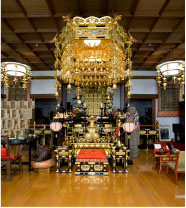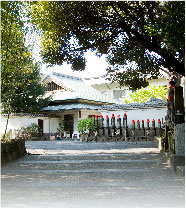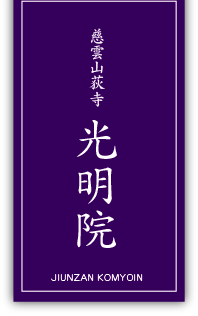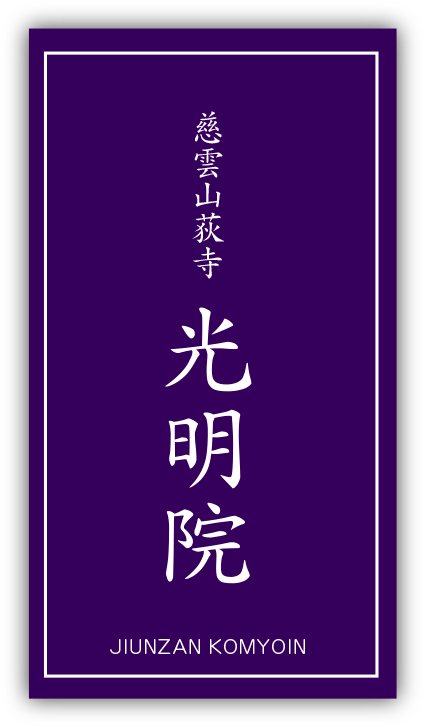Though this temple is popularly known as Komyo-in, its formal name is Jiun-zan Ogidera Komyo-in Temple. It belongs to the Buzan sect of Shingon Buddhism. Komyo-in is located in central Ogikubo, on an elevation on the northern side of the middle reaches of the Zempukujigawa River, which flows through Tokyo. In the Main Hall are enshrined statues of both Senju Kannon, the Thousand-armed Bodhisattva of Compassion—the temple’s principal image—and another of the Mystic King Fudomyoo. On the grounds are also to be found a belfry and the Emma Hall enshrining a statue of Emma Daio, the King and Judge of the Afterlife. The Komyo-in is the sole surviving ancient temple in Ogikubo. According to temple history, in 708, the high-ranking Buddhist priest Gyoki (668—749) was passing through this region bearing on his back a statue of Kannon, the Bodhisattva of Compassion, that he himself had carved. Miraculously, the statue grew so heavy that Gyoki could no longer walk. Believing this indicated a connection between the bodhisattva and the locale, he cleared away the reeds, or ogi, that grew all around and built a humble building to house the statue. He called the building the Ogido, or Ogi Temple. Since that time, this whole area has been known as Ogikubo, or Reed Hollow.
Though this temple is popularly known as Komyo-in, its formal name is Jiun-zan Ogidera Komyo-in Temple. It belongs to the Buzan sect of Shingon Buddhism. Komyo-in is located in central Ogikubo, on an elevation on the northern side of the middle reaches of the Zempukujigawa River, which flows through Tokyo. In the Main Hall are enshrined statues of both Senju Kannon, the Thousand-armed Bodhisattva of Compassion—the temple’s principal image—and another of the Mystic King Fudomyoo. On the grounds are also to be found a belfry and the Emma Hall enshrining a statue of Emma Daio, the King and Judge of the Afterlife. The Komyo-in is the sole surviving ancient temple in Ogikubo. According to temple history, in 708, the high-ranking Buddhist priest Gyoki (668—749) was passing through this region bearing on his back a statue of Kannon, the Bodhisattva of Compassion, that he himself had carved. Miraculously, the statue grew so heavy that Gyoki could no longer walk. Believing this indicated a connection between the bodhisattva and the locale, he cleared away the reeds, or ogi, that grew all around and built a humble building to house the statue. He called the building the Ogido, or Ogi Temple. Since that time, this whole area has been known as Ogikubo, or Reed Hollow.











